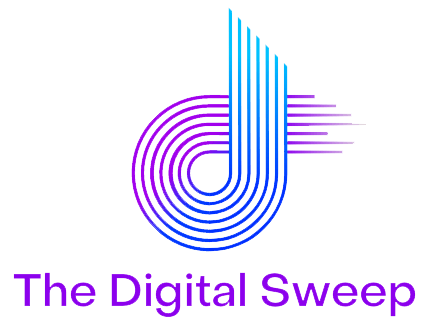Are you thinking of starting a blog? If yes, you have landed at the right spot. Here, you will get to know the key aspects and essential features of the top blogging platforms. A powerful blogging platform can serve as a foundation for running a successful blog.
In fact, choosing a blogging platform is the first and most critical factor to consider when creating a blog. To assist you in finding the best blogging platform that suits your needs, we have created a list of the best blogging platforms for 2022.
So, without any delay, let’s see what we got here for you!
Table of Contents
- Squarespace (Paid)
- Weebly (Paid)
- Wix (Paid)
- Ghost (Paid)
- Drupal (Paid)
- WordPress.com (Free)
- Blogger (Free)
- Final Thoughts
1. Squarespace (Paid)
Squarespace is a blogging platform that serves as a complete package, making it easy for you to start an outstanding blog. The drag-and-drop feature makes it a viable option for new bloggers. It offers a range of customization options.
Besides, Squarespace comes with amazing marketing tools. Hence, promoting your blog’s content is quite easy with this blogging platform. The paid version comes with various unique features. SSL Security and custom domain name are a few to name.
Pros
- Highly customizable
- User-friendly interface
- Ideal for beginners
- Comes with a range of design templates
Cons
- Integration options are fewer
Pricing
The standard package starts from $12/month.
2. Weebly (Paid)
Being a powerful blogging platform, Weebly helps you build an outstanding blog. It offers customizable templates and themes. So, you don’t need to learn web designing or coding. In addition, you can also create outstanding effects such as Parallax scrolling.
Weebly also takes care of the marketing aspects of your blog with its effective and intuitive tools. As a result, you can easily promote your blogs and social media posts on multiple platforms. Optimizing your blog via Weebly is a breeze.
Pros
- Customizable features
- Better integration options
- Simple interface
- Easy setup procedure
Cons
- Lacks sufficient bandwidth
Pricing
The minimum plan costs $6/month. However, the basic version is free to use.
3. Wix (Paid)
Wix is an easy-to-handle blogging platform. The reason for this is its drag-and-drop interface. Hence, beginners won’t face any issues while creating a nice-looking blog with Wix. The paid version is expensive.
However, it ensures the best value for money. It offers more than 800 templates, making it easy to create a professionally looking blog. You can also choose among a range of industry-specific templates.
Pros
- Easy drag-and-drop interface
- The platform comes with a range of e-Commerce tools
- Suitable for beginners
- Takes less time to create a blog
Cons
- Plug-ins and themes are limited
Pricing
The starting plan starts from $4.5/month.

4. Ghost (Paid)
This blogging platform is highly recommended for bloggers. With a minimalist approach, creating and publishing a blog is way too easy with Ghost. It comes with a rich content editor. So, formatting your posts takes less than anticipated time.
There are various tools, which allow you to write catchy content. Furthermore, Ghost also has additional features like native SEO features, registration forms (built-in), subscription support, etc.
Pros
- Suitable for bloggers and writers
- Hassle-free setup
- Impressive range of features and tools
- Attractive themes and layouts
- Easy to learn interface
Cons
- Limited available themes
Pricing
The paid plan of this platform starts from $9/month. You can also take advantage of the 14-day free trial.
5. Drupal (Paid)
Drupal is an advanced and powerful blogging platform. If you have additional blogging needs, Drupal can be your best choice. It’s a self-hosted option, which also comes with unique features.
When you have learned the majority of the available tools, Drupal can help you create a perfect blog. Besides, it is compatible with various page templates. The security features are also worth mentioning.
Pros
- Meets most of the blogging requirements
- Additional ‘Content Management System’ (CMS) features
- Comes with advanced user permissions
- Professional blogging platform
Cons
- Beginners might find it hard to learn
Pricing
The Personal Membership plan is available for $17.5/month. On the contrary, Organization Membership costs $42/month.
6. WordPress.com (Free)
Beginners and hobbyists do prefer WordPress.com. The most obvious reason for this preference is the hassle-free setup. Apart from this, you can also take advantage of its free hosting services (WordPress subdomain).
WordPress also gives you enough customization options for making necessary changes to your blog. No doubt, WordPress.com serves as a viable option for creating a perfect blog without paying any subscription fee.
Pros
- Customizable plugins and themes
- Vigilant customer support
- Perfect choice for hobbyists
- Compatible with a wide range of software
- User-friendly interface
- Free
Cons
- Fails to offer proper backup and security
Pricing
WordPress.com is completely free and comes with a variety of impressive features. However, if you need extended options, the paid version is also available for $4/month.
7. Blogger (Free)
Blogger is among the most famous free blogging platforms. It comes with the basic tools and essential features. Blogger turns out to be a perfect option when compared with other free blogging platforms. In addition, the platform is easy to use. This allows building or customizing a blog without much of a hassle.
Pros
- Suitable for beginners
- Offers essential features
- Easy-to-use interface
- Free
Cons
- Can’t change display settings
Final Thoughts
After going through the above list of best blogging platforms, you are now able to make an informed decision. However, make sure to pay attention to the flexibility and functionality of a blogging platform when choosing one. If you plan to start blogging, we recommend SkillShare as a learning resource with many online courses to get you started.













0 Comments